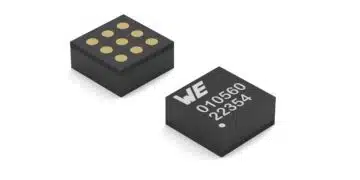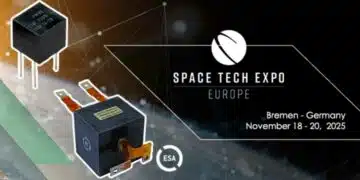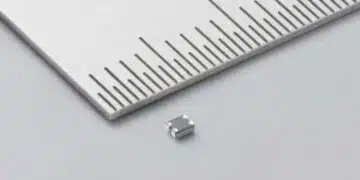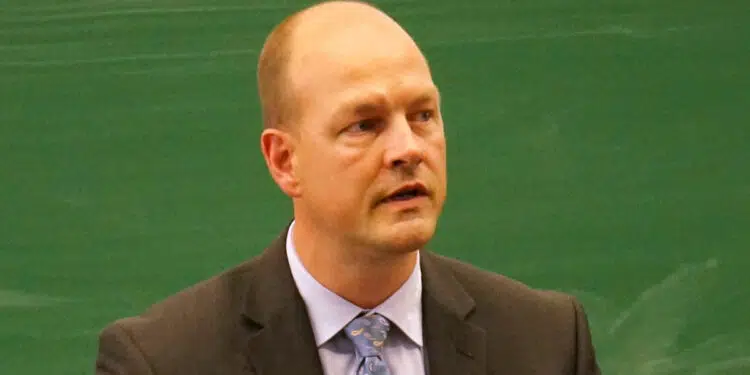“The last interview of the month with Bill Millman raised a high level of interest what is going on within the components’ supply chain. The responsibility of manufacturers and the material usage trends will be followed in the next interview. Let’s move one step up upwards in the material supply chain tree. The interview invitation was accepted by Dr. Christoph Schnitter, R&D director of metal powder processor and smelter company H.C.Starck. I know Christoph for many years as the knowledgable material scientist from technical discussions about tantalum/niobium powders and its structures” T.Zednicek EPCI
> Q1 EPCI: Hello Christoph, can you please briefly introduce yourselves, your current position, scope of your work and your experience/relation to the passive components supply chain?
Dr. Schnitter:
Thank you Tomas. My experience in materials for passive components goes back for more than 18 years now. After getting my diploma and PhD in inorganic chemistry, I joined the central R&D division of H.C. Starck in 1998 as a project manager. One of my first projects was the development of niobium based capacitor powders which we have successfully started to supply to the market starting in 2001 until today. Later on, I worked on several development projects in the field of tantalum and niobium based materials for capacitors. In 2004, I became group manager for the capacitor material development including tantalum and niobium as well as the development of PEDOT-based conductive polymer materials. In 2009, I was promoted to the director of the R&D department for powder development of H.C.Starck . I was responsible for the development of Ta, Nb, W, Mo, Re metal powders and ceramic powders like carbides, nitrides, silicides for many different applications in various industries, many of them in electronics. Currently, I am holding the position of the head of R&D of the H.C. Starck Tantalum and Niobium GmbH.
In the field of capacitor materials, we develop new powders allowing our customers to follow the current major trends like miniaturization, reduction of ESR and ESL or operation in harsher environments. For Ta powders, the major focus is to maximize the CV and to optimize ESR capability of our powders over the whole voltage range by optimizing the microstructure. Just recently, we introduced a new class of powders for high voltage applications up to 300 V allowing us to achieve distinctly higher energy densities of Ta capacitors made therefrom and showing low ESR in parallel.
However, we are also looking more forward to new technologies and materials. For example, there is an increasing demand to lower the height of the passive components more and more with the final target of embedded devices. We have developed a Ta paste technology allowing us to produce ultrathin Ta capacitors with heights below 0.2 mm.
As the current dielectric materials are getting closer to their physical limits, we are actively researching in new materials with superior properties.
> Q2 EPCI: Some component manufacturers have decided to secure their supply chain by a vertical integration that is including material mining and processing. Do you see this as a general trend that may impact also your business model / need change of your strategy on market?
Dr. Schnitter:
We do not see this as a global trend. Next to vertical integration there is other options to solve some concerns about supply security and price volatility. Each player in the industry has to find his own way of how to deal with market challenges..
For a fully vertically integrated company, you need to take care that you are the best in all disciplines and you have also to be innovative in all fields. This is hardly to achieve, but it is understandable from history why some manufactures started to set up their vertical supply chain. However, we believe that the most important task for the Ta capacitor industry altogether is to develop future applications. We appreciate the activities of our customers when they head for design-ins and extend the capabilities and usage of Ta capacitors. Our competence is to develop the materials to fulfill the needs of the new applications. We are happy to enter our material expertise/competence into this race. against alternative technologies and rely on the great competence and work of our customer to develop and improve the device.
> Q3 EPCI: What is a current usage trend of technological materials in your segment and what is your expectation for future ? Is the passive component industry consuming more and more of the “conventional material” under cost down pressure or is the trend to focus on lower volume production, but more advanced high tech “supermaterials” – new composition, with extreme purity, fine/nano structured particles etc.
Dr. Schnitter:
A good balance is always important. Providing “conventional material” and also develop new super materials. As you know, we have a strong footprint in Tantalum capacitor technology, but also have quite some competence in high purity oxides used in SAW filters or we provide Niobates for piezo components. These are very specific materials providing high performance in other electronic applications. Some materials such as e.g. CVD precursor materials for Ta, Nb or W are still niche applications.
Also in Ta cap powders, we provide the whole spectra of products. Sometimes already established products also need some further development to open up new applications as an example high voltage powders. Already some years ago, we also started to improve materials having higher capacity also for voltage ranges of 16V and higher. By providing excellent homogeneity, we are able to optimize the capacity achieved from used Tantalum.
The search for the new “super material” is also ongoing and some compositions showed some promising results. Via high throughput screening, we have a systematic and easy approach to find the optimum composition. However, before having electronic components from these materials available, there is still a long way of development to go.
> Q4 EPCI: The new trend seen everywhere is a 3D printing that is now progressing by a number of different technologies. Are you preparing some materials specifically for the 3D metal printing techniques ? Do you think that this technology will be soon adopted to mass production or it will be long term growing but more as a niche-like application ?
Dr. Schnitter:
Yes, we are preparing solutions for this trend and we are convinced that this technology is going into mass production. This technology will to some extend revolutionize the industry. It will be always the question in which application it will offer a cost efficient alternative to current technologies. If there will be such fields in the electronic industry, it is so far not foreseeable. Currently, our focus is in different directions but we are monitoring this technology very carefully.
> Q5 EPCI: We see a large scale of alternative new non-metallic materials that are offering attractive features replacing the conventional technology metals … is there still a place for mass consumed conventional materials or these are more and more pushed to niche. Is there some “new metal based material” on horizon that can significantly impact some components and its applications?
Dr. Schnitter:
As explained above, our focus is not only metal. All our products in our division are somehow related with Tantalum, Niobium and sometimes also Tungsten. However, we offer them in very different appearances but always customized to the needs of the application and our customer. These metals are offered as metals, ceramic compounds, oxides, chlorides or even complex water soluble compounds. Our competence is to develop and offer the materials as customized composition and we tune their performance in the final application by designing the Micro-, Macro- and Meso- structure of our powders. That is our material competence we offer to all our customers and partners to bring the application to market.
Thank you Christoph for your time and willingness to share your opinions with us.
The more about the H.C.Starck company can be found at the company’s homepage here.
































